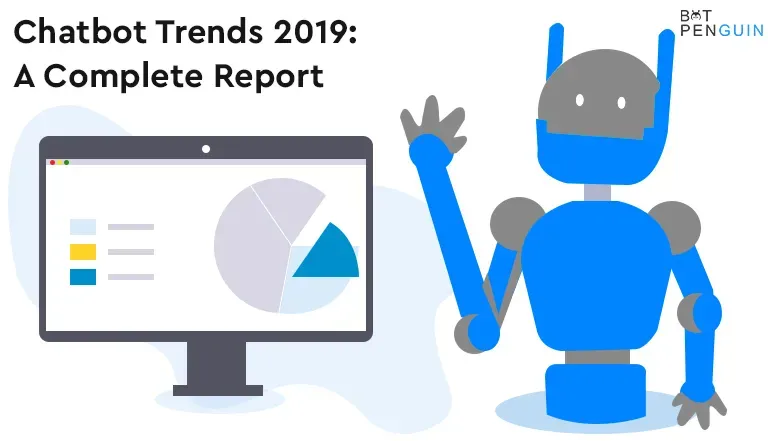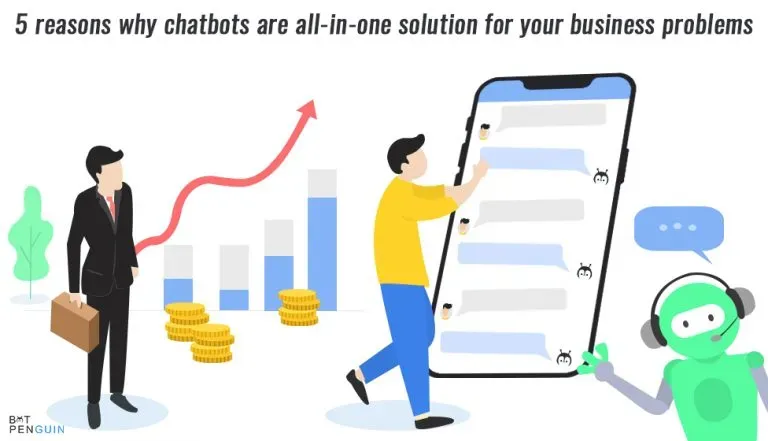One of ChatGPT -4's most impressive new capabilities is its capacity to manage not just words. Only four months have passed since OpenAI.
This firm developed artificial intelligence and released ChatGPT, which, without overstating its significance, altered the course of history.
It has altered schooling systems, provoked doomsday predictions in global employment markets, and attracted millions of users, including huge banks and app developers, in only 15 weeks.
But, ChatGPT is already being replaced by ChatGPT-4, an even more potent weapon that will undoubtedly have much greater global reverberations.
How potent is GPT-4, what does it do, and how can you utilize it? Here is all you need to know.
More about ChatGPT-4
Begin with the name. GPT-4 stands for "generative pre-trained transformer 4," and the Chat part is self-explanatory since it is an interactive computer interface.
This indicates that the OpenAI program is currently in its fourth iteration. It has gone through extensive data analysis to learn how to produce writing that sounds human and provides users with in-depth answers to questions.
What distinguishes ChatGPT-4 from ChatGPT?
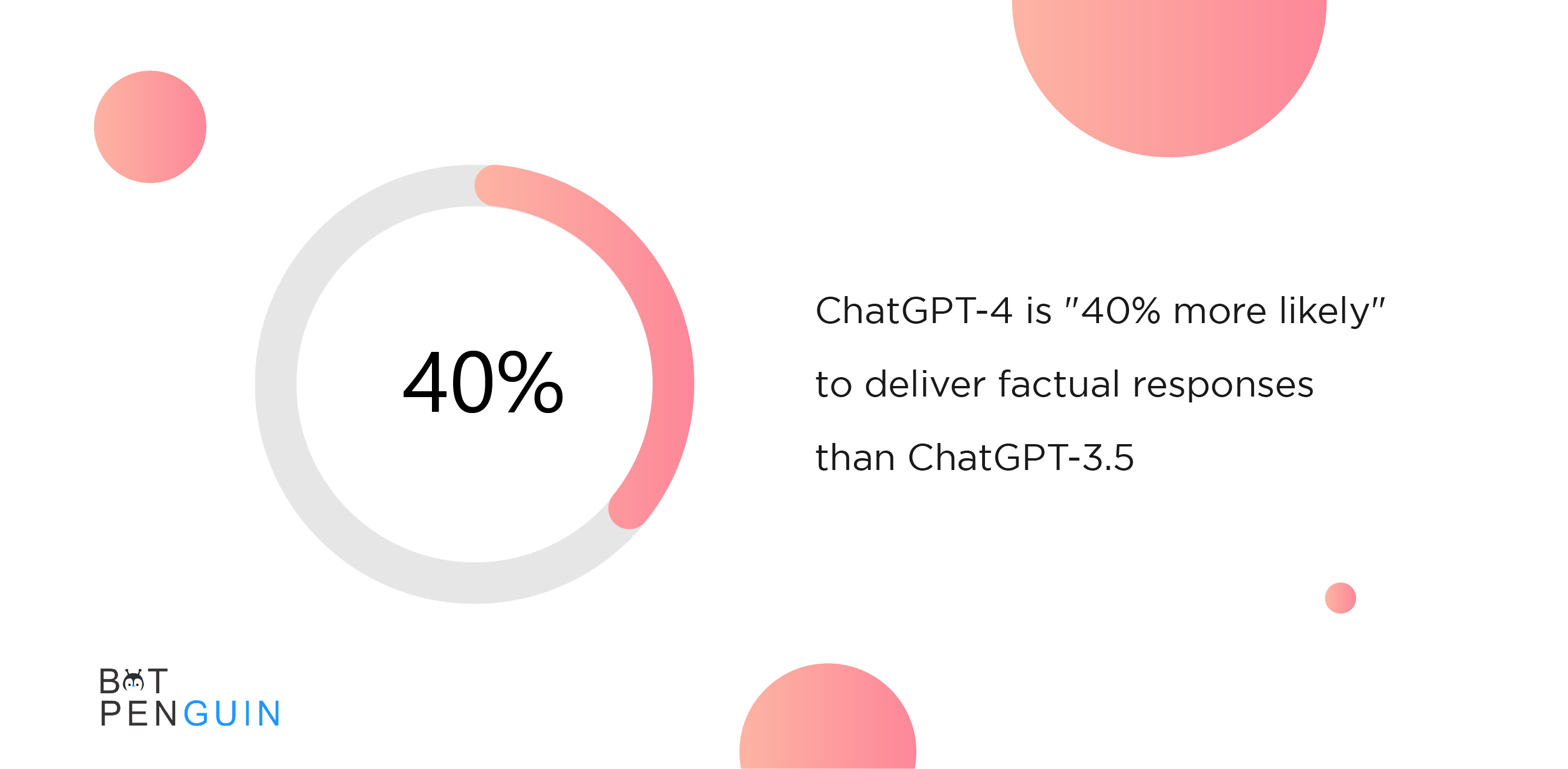
Everybody who has looked into ChatGPT is aware of its shortcomings.
It has drawn criticism for providing incorrect information, displaying bias, and acting improperly by getting beyond its own built-in limitations and providing responses that are not permitted.
The claim has been made that the bot's quality depends entirely on the data it was trained on. OpenAI has worked to make the new software safer for the last six months.
It asserts that ChatGPT-4 is "40% more likely" to deliver factual responses than ChatGPT-3.5 and is more accurate, creative, and collaborative. Here's how ChatGPT4 differs from ChatGPT in several ways.
GPT-4 can view and comprehend images
The latest advancement in this versatile machine learning system is its "multimodal" ability, enabling it to understand various input forms.
Previous versions, such as ChatGPT and GPT-3, were limited to text-based tasks like reading and writing.
However, GPT-4 can now interpret photos to extract relevant data. Apart from just describing the image, it can comprehend beyond that, marking a significant milestone in its capabilities.
The example offered by OpenAI has it explaining the humor in an image of a ridiculously enormous iPhone connector.
Still, the cooperation with Be My Eyes, an app used by blind and low-vision persons that allow volunteers to describe what their phone sees, is more telling.
GPT-4 is more challenging to combine
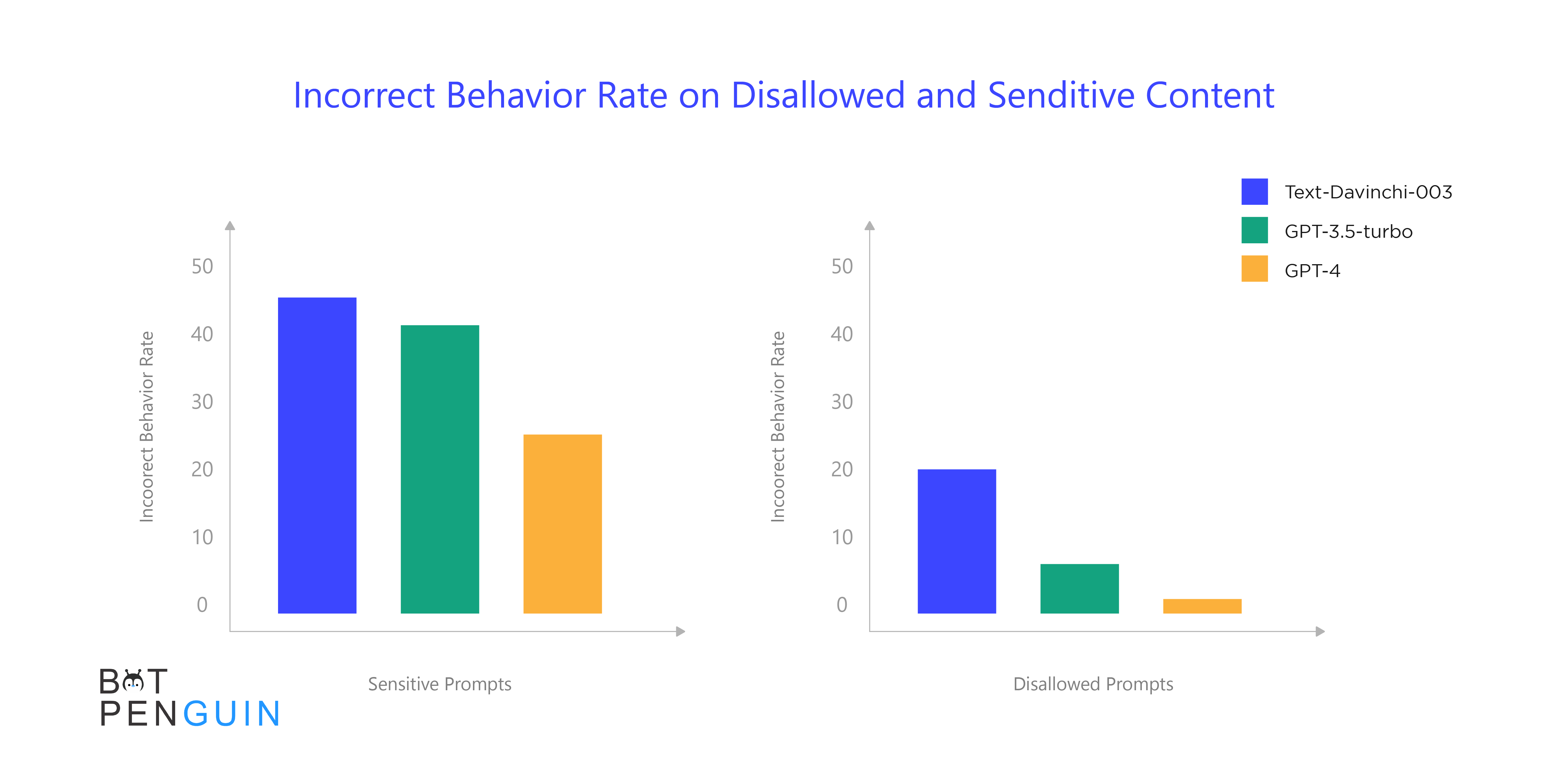
Despite their advancements, modern chatbots still need to correct their errors.
If prompted to believe they explain what a "bad AI" would do, the model can produce strange and disturbing responses.
Additionally, "jailbreak" prompts, which quickly release ChatGPT and other chatbots from their restrictions, are created through collaborative efforts.
In contrast, GPT-4 has been trained on many harmful prompts that users have provided OpenAI over the past year.
Considering these factors, the new model outperforms its forerunners regarding “factuality, steerability, and refusing to wander outside guardrails.”
The way OpenAI sees it, GPT-3.5 (which powered ChatGPT) was kind of a "test run" of a new training architecture, and they used the learning from that to the current version, which was "unprecedentedly stable."
There were fewer surprises because they were better equipped to anticipate its capabilities.
The long memory of GPT-4
Despite being trained on a vast amount of text materials, these massive language models have a limit to their ability to retain information during a conversation with users.
This limitation was also present in previous ChatGPT and GPT-3.5, which could remember up to 4,096 "tokens" or roughly 8,000 words, equivalent to about four or five book pages.
Once the attention function moved beyond this limit, the model could lose track of information.
However, the upcoming GPT-4 will have an increased token count of 32,768, equivalent to approximately 64,000 words or 50 pages of text, making it capable of retaining larger volumes of information, like a complete play or short story.
It can remember roughly 50 pages during a discussion or when writing material.
As a result, it will recall the 20 pages of dialogue you just had, or if you're writing an essay or a tale, it might refer to 35 pages of earlier occurrences.
Token count and the attention mechanism are described in very general terms there, but the general concept is increased memory and the accompanying talents.
GPT-4 has more language options
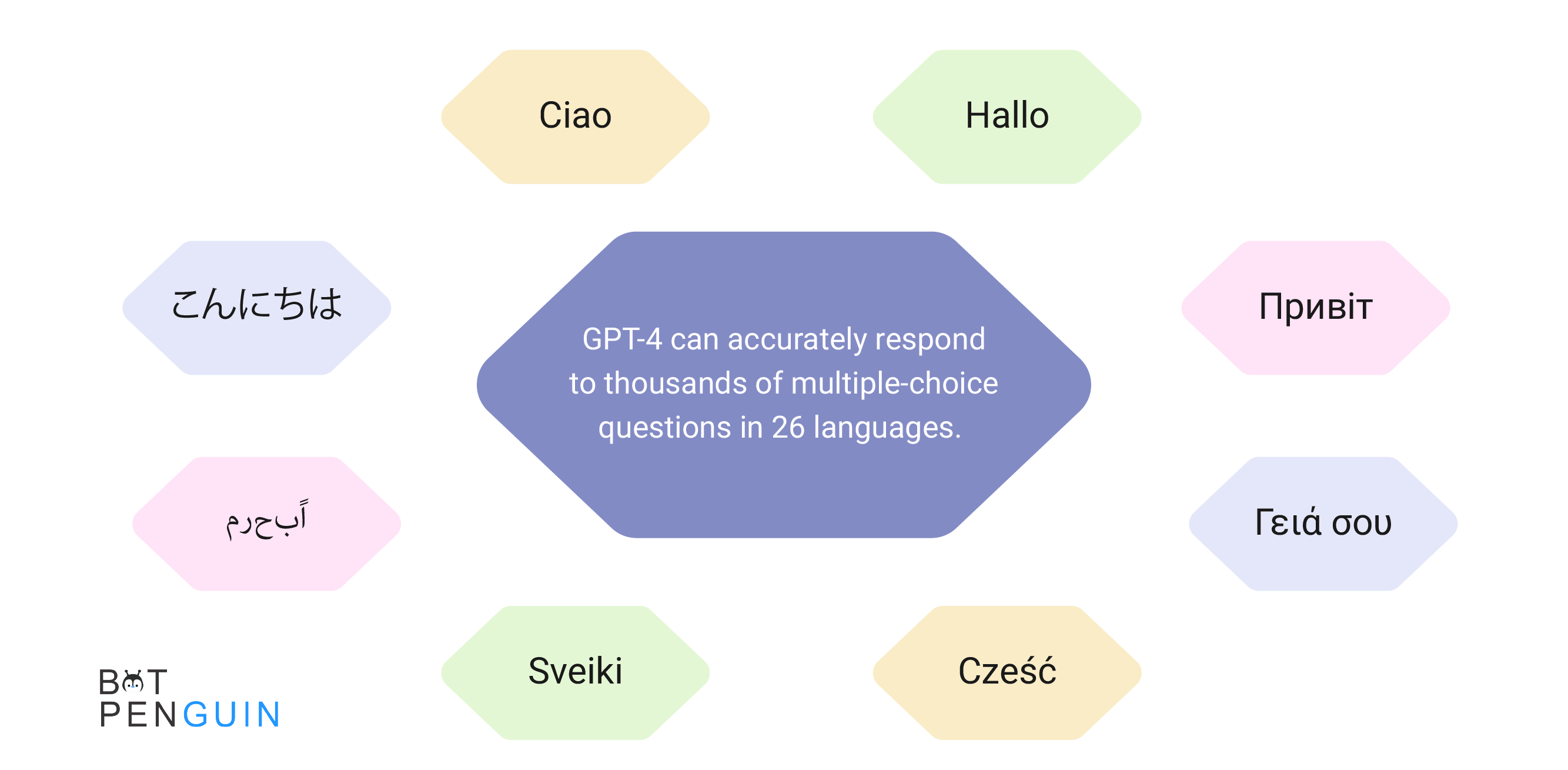
English speakers predominate in artificial intelligence, and everything from data to research papers to testing is written in this language.
Therefore, huge language models' capabilities should be available in all written languages.
GPT-4 moves in that direction, proving it can accurately respond to thousands of multiple-choice questions in 26 languages.
Although it adapts well to other languages, it excels in Romance and Germanic languages.
Although this initial evaluation of language skills is encouraging, it falls short of fully embracing multilingual talents because the assessment criteria were originally translated from English and because multiple-choice questions don't represent everyday communication.
But it performed admirably on a task it wasn't trained for, suggesting that GPT-4 may be more accommodating to non-English speakers.
Several "personalities" exist within GPT-4
The ability of AI to alter its behavior on demand is known as "steerability," and it is an intriguing concept. When humans persuade the model that it is bad or depressed, for example, this might be hazardous. It can be handy, such as when playing the role of a good listener.
In GPT-4, users can modify the default ChatGPT personality by adjusting the verbosity, tone, and style to suit their preferences better.
Compared to GPT-3.5, steerability is more seamlessly integrated into GPT-4.
However, the team notes that this steerability feature has limits, as it's the easiest way to control the model's personality and prevent it from deviating too far from its intended character.
This may be accomplished by instructing the chatbot to pretend to be a DM in a tabletop role-playing game or to respond as if you were being interviewed for television news.
Yet, in reality, you were only advising the GPT-3.5's "default" personality. The first's perspective, conversational style, tone, or interaction approach can now be baked in by developers.
What else can ChatGPT-4 do?
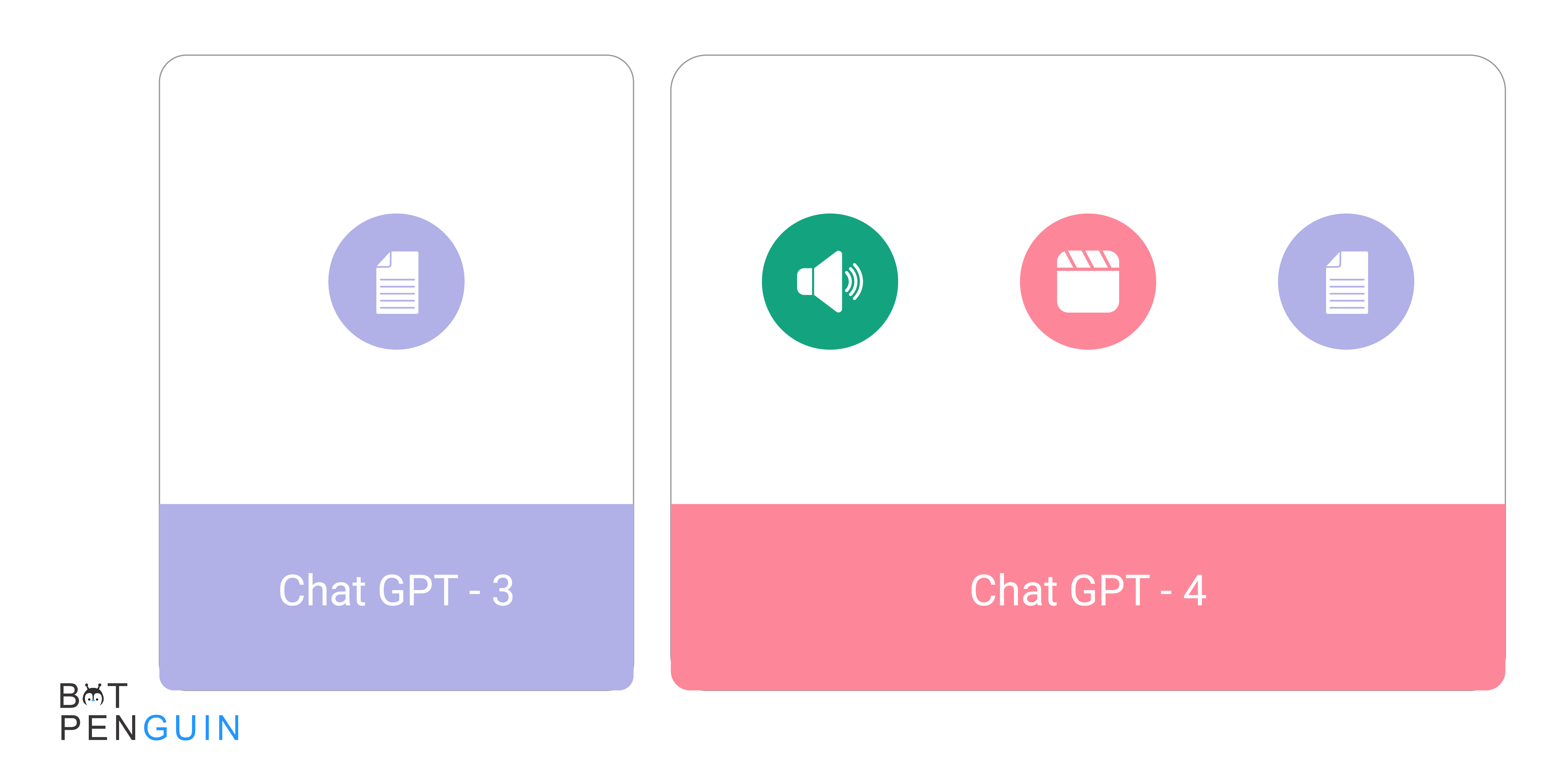
One of ChatGPT -4's most impressive new features is its capacity to handle words and images, or "multimodal" technology.
Users can upload text and a picture, which ChatGPT-4 can process and discuss. Eventually, video input will also be possible.
Which restrictions follow Chat-GPT4?
Since ChatGPT-4 was trained on data from before 2021, it performs similarly to its predecessor regarding reasoning about current events.
The most recent prototype "still has numerous recognized limitations that we are aiming to solve, such as social biases, hallucinations, and adversarial prompts," according to a blog post by OpenAI.
How does ChatGPT-4 work?
By registering with OpenAI here, most individuals can try out basic ChatGPT, albeit there may be limitations in specific nations and areas.
Nevertheless, the most recent version is now available as an API for developers to include in their applications and ChatGPT Plus members for $20 per month.
Joining the waitlist is possible here.
In the future, you'll find it on Bing, Microsoft's search engine.
If you visit the Bing website and click the "chat" icon at the top, you'll probably be taken to a page that asks you to join a waitlist; access is being given out to users gradually.
Who is currently utilizing ChatGPT-4?
It is being tested to see if it can prevent fraud by payment processor Stripe Inc., used by Morgan Stanley to organize wealth management data, and integrated into language-learning tool Duolingo to help users understand their mistakes and practice speaking in public.
What comes after?
In a nutshell, rivals.
Several technology companies are vying for a piece of the action even though Microsoft Corp. has promised to invest $10 billion in OpenAI.
Several firms are vying for the AI train, but Alphabet Inc.'s Google has already made its own AI service, Bard, available to testers.
In China, Baidu Inc. is poised to introduce its bot, Ernie, while Meituan, Alibaba, and many smaller businesses are joining the race.

